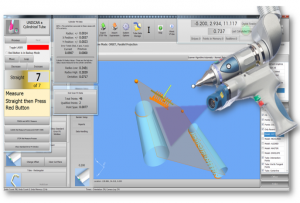Difference between revisions of "Building Tube Assemblies in SOLIDWORKS"
(Created page with "<table> <tr cellpadding=10> <td width=225> 200px 200px * Back to VTube-STEP * Back to [[VTube-LASER]...") |
|||
| (24 intermediate revisions by one user not shown) | |||
| Line 2: | Line 2: | ||
<tr cellpadding=10> | <tr cellpadding=10> | ||
<td width=225> | <td width=225> | ||
| − | |||
[[image:vtube-laser_logo_1.96.png|200px]] | [[image:vtube-laser_logo_1.96.png|200px]] | ||
* Back to [[VTube-STEP]] | * Back to [[VTube-STEP]] | ||
| Line 14: | Line 13: | ||
__NOTOC__ | __NOTOC__ | ||
| − | + | VTube-LASER can reverse engineer tube and then build that tube in SOLIDWORKS as a fully-constrained 3D parametric model. This page describes the basic steps to create an assembly from a part using VTube-LASER and SOLIDWORKS.<br><br> | |
| − | VTube-LASER can reverse engineer tube and then build that tube in SOLIDWORKS as a fully-constrained 3D parametric model. This page describes the basic steps to create an assembly from a part using VTube-LASER and SOLIDWORKS. | + | |
| + | [[image:vtube-laser_v2.5_header_to_measure.png|500px]]<br><br> | ||
| − | |||
| + | ==STEP 1: Measure One of the Parts in VTube-LASER== | ||
| + | Measure the first pipe and create a measured tube shape.<br><br> | ||
| + | [[image:vtube-laser_v2.5_measure header pipe.png|500px]] | ||
| + | <br><br> | ||
| + | <br><br> | ||
| − | == | + | ==STEP 2: Build the Part in SOLIDWORKS== |
| − | + | Use the File tab in Measure Tube Data to send the measured part to SOLIDWORKS.<br><br> | |
| + | [[image:vtube-laser_v2.5_build solidworks.png|500px]]<br><br> | ||
| + | <br><br> | ||
| − | == | + | ==STEP 3: Save the SOLIDWORKS Part File== |
| − | + | Save the new SOLIDWORKS part to a unique part file on the disk.<br><br> | |
| + | [[image:vtube-laser_v2.5_solidworks part.png|500px]]<br><br> | ||
<br><br> | <br><br> | ||
| − | == | + | ==STEP 4: Repeat Steps 1 through 3 for all the parts== |
| − | + | Be careful to not move the assembly. Repeat the first three steps for each tube.<br><br> | |
| − | + | <br><br> | |
| + | ==STEP 5: Start a New Assembly== | ||
| + | Start a new assembly. These steps show how to insert four parts from the SOLIDWORKS part files.<br><br> | ||
| + | [[image:vtube-laser_v2.5_solidworks new assembly.png|500px]] | ||
<br><br> | <br><br> | ||
| + | <br><br> | ||
| + | |||
| + | ==STEP 6: Cancel the New Assembly Feature== | ||
| + | In order to insert the tubes in the proper location, we need to establish the common origin in a plane. So press Cancel for Begin Assembly first.<br><br> | ||
| + | [[image:vtube-laser_v2.5_solidworks cancel new assembly.png|500px]] | ||
| + | <br><br> | ||
| + | <br><br> | ||
| + | |||
| + | ==STEP 7: Create a Reference Plane at the Origin== | ||
| + | Insert a new plane, then press Finish. It is not necessary to change the location of the plane - since it is already centered around the world origin.<br><br> | ||
| + | [[image:vtube-laser_v2.5_solidworks insert a plane.png|500px]] | ||
| + | <br><br> | ||
| + | <br><br> | ||
| + | |||
| + | ==STEP 8: Press Insert Components in Assemblies== | ||
| + | Press Insert Components.<br><br> | ||
| + | [[image:vtube-laser_v2.5_solidworks insert a component.png|500px]] | ||
| + | <br><br> | ||
| + | <br><br> | ||
| + | |||
| + | ==STEP 9: Select Multiple SOLIDWORKS Files== | ||
| + | Use Ctrl + or Shift + to select multiple parts to include in the assembly.<br><br>Click on Open.<br><br> | ||
| + | [[image:vtube-laser_v2.5_solidworks select multiple swparts to import.png|500px]] | ||
| + | <br><br> | ||
| + | <br><br> | ||
| + | |||
| + | ==STEP 10: Select the Origin== | ||
| + | Point to the middle of the plane and click. Do this for each part until all the parts are inserted at the origin.<br><br> | ||
| + | [[image:vtube-laser_v2.5_solidworks insert part.png|500px]] | ||
| + | <br><br> | ||
| + | <br><br> | ||
| + | |||
| + | ==STEP 11: Repeat STEP 10 for Each Part== | ||
| + | Repeat clicking the origin at the center of the plane for each part.<br><br> | ||
| + | [[image:vtube-laser_v2.5_solidworks insert part repeat.png|500px]] | ||
| + | <br><br> | ||
| + | <br><br> | ||
| + | |||
| + | ==STEP 12: Exit the Sketch== | ||
| + | Exit the sketch after all the parts are inserted.<br><br> | ||
| + | [[image:vtube-laser_v2.5_solidworks insert part exit sketch.png|500px]] | ||
| + | <br><br> | ||
| + | <br><br> | ||
| + | |||
| + | ==The Assembly is Complete== | ||
| + | SOLIDWORKS should show a completed assembly.<br><br> | ||
| + | [[image:vvtube-laser_v2.5_solidworks assembly complete.png|500px]] | ||
| + | <br><br> | ||
| + | <br><br> | ||
| + | |||
==Other Pages== | ==Other Pages== | ||
Revision as of 20:41, 2 June 2016
|
VTube-LASER can reverse engineer tube and then build that tube in SOLIDWORKS as a fully-constrained 3D parametric model. This page describes the basic steps to create an assembly from a part using VTube-LASER and SOLIDWORKS.
STEP 1: Measure One of the Parts in VTube-LASER
Measure the first pipe and create a measured tube shape.

STEP 2: Build the Part in SOLIDWORKS
Use the File tab in Measure Tube Data to send the measured part to SOLIDWORKS.

STEP 3: Save the SOLIDWORKS Part File
Save the new SOLIDWORKS part to a unique part file on the disk.

STEP 4: Repeat Steps 1 through 3 for all the parts
Be careful to not move the assembly. Repeat the first three steps for each tube.
STEP 5: Start a New Assembly
Start a new assembly. These steps show how to insert four parts from the SOLIDWORKS part files.

STEP 6: Cancel the New Assembly Feature
In order to insert the tubes in the proper location, we need to establish the common origin in a plane. So press Cancel for Begin Assembly first.

STEP 7: Create a Reference Plane at the Origin
Insert a new plane, then press Finish. It is not necessary to change the location of the plane - since it is already centered around the world origin.

STEP 8: Press Insert Components in Assemblies
STEP 9: Select Multiple SOLIDWORKS Files
Use Ctrl + or Shift + to select multiple parts to include in the assembly.
Click on Open.

STEP 10: Select the Origin
Point to the middle of the plane and click. Do this for each part until all the parts are inserted at the origin.

STEP 11: Repeat STEP 10 for Each Part
Repeat clicking the origin at the center of the plane for each part.

STEP 12: Exit the Sketch
Exit the sketch after all the parts are inserted.

The Assembly is Complete
SOLIDWORKS should show a completed assembly.

Other Pages
- Back to the VTube-STEP page
- Back to the VTube-LASER page



